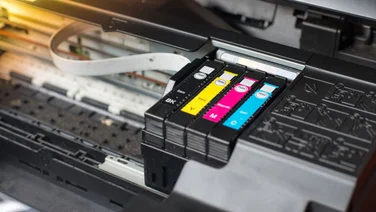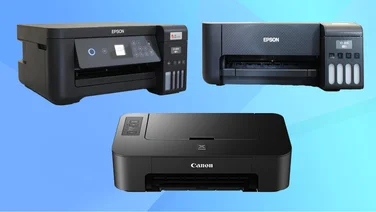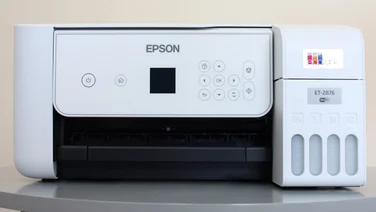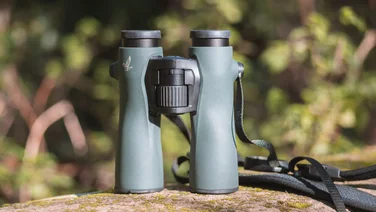To help us provide you with free impartial advice, we may earn a commission if you buy through links on our site. Learn more










Expert Reviews is proud to bring you this Canon PowerShot SX40 HS review from Short Sharp Reviews – click through to YouTube for a 1080p HD version
For a while it looked as though bulky, expensive bridge cameras were going to be squeezed out of the market by entry-level SLRs and compact system cameras, but the latest generation has come back fighting. Optical zoom ranges are now reaching the mid-thirties, and with burst speeds in excess of 10fps, these cameras are well equipped for sports and wildlife photography. They excel for video capture, too, with most offering 1080p capture and effective autofocus while recording. Those big zooms help for video, too, letting the user shoot from a distance so people in front of the camera don’t feel too self-conscious.

The SX40 HS arrives with all its vital statistics in order: a 35x zoom stretching from an ultra-wide-angle 24mm all the way to 840mm, 1080p AVC videos and 10.3fps burst shooting. There’s a hotshoe underneath a plastic protective cover, an electronic viewfinder and an articulated LCD screen. Both screens are on the small side. We’re used to these viewfinders being small, but the screen’s 2.7in size and 230,000-dot resolution are disappointing for the price. It didn’t impact too heavily in normal use but manual focus was tricky to judge, despite the assistance of a digital magnify function while adjusting.
The full complement of manual exposure modes is included, and we like how the preview image becomes brighter or darker to reflect exposure settings. However, those who like to tinker with exposure will be dismayed at its inability to save photos in RAW format.
Focus control is particularly important in an ultra-zoom camera, as telephoto shots have a shallow depth of field so choosing the right focus point is critical. As such, it’s great to see a dedicated button for moving the focus point around the frame. There’s also a track focus option for tracking moving subjects, although it didn’t seem as reliable as other implementations we’ve seen.
Another button momentarily pulls back the zoom, providing a cure to the common problem of losing the subject when working at long telephoto focal lengths. A custom button can be assigned to one of 15 functions including AE lock, white balance, aspect ratio and burst mode. We’d have liked one or two more physical buttons to give direct access to more of these functions.

The Panasonic Lumix DMC-FZ150 recently raised the bar for performance, and the SX40 IS can’t match it. Its 10fps burst mode lasts for eight frames, which isn’t far off the FZ150’s 12fps for 12 frames, but it’s only available as a scene preset that prohibits control to virtually every other setting. For full control – or for burst shooting that lasted longer than a second – we had to settle for 2.1fps with fixed focus or 0.8fps with continuous autofocus. By contrast, the FZ150 managed 5.4fps with continuous autofocus, slowing to 2.7fps after 22 shots.
Another concern is over autofocus performance and general shot-to-shot times, with the latter averaging 2.8 seconds in our tests. That’s four times slower than the FZ150, which came in at 0.7 seconds. Not everyone feels the urge to fire off a shot every second, but it’s a useful technique for ensuring that fleeting moments aren’t missed. Meanwhile, the FZ150’s quicker autofocus could make the difference between catching the perfect shot and missing it.
Video recording gives us much less to criticise. The 1080/24p AVC files encoded at 34Mbit/s with stereo uncompressed audio gobble up storage space, which in turn limits clips to around 16 minutes, but picture and sound quality were both superb. The optical stabilisation worked exceptionally well at keeping telephoto handheld shots steady. Autofocus could be fairly slow to update when panning the camera, but neither the autofocus nor the zoom motors impinged on the soundtrack.
Unusually, the soundtrack’s volume can be set manually, which avoids the volume lurching up and down as it reacts to quieter and louder sounds. It’s a shame there isn’t the same level of control for video exposure, though. AE lock works for videos if the custom button has been assigned that function, but all other exposure controls are bypassed as soon as recording commences.
Following in the footsteps of the Panasonic FZ150, the SX40 HS swaps its predecessor’s 14-megapixel CCD for a 12-megapixel backside-illuminated CMOS. The noise-prone sensor was the Canon SX30 IS‘s weakest feature, but the SX40 HS’s sensor is undoubtedly its best.

Well-balanced exposures and natural-looking colours
Noise levels at ISO 1600 were incredibly low, and subtle details were preserved too. The FZ150 set a high standard in this respect but the SX40 HS confidently surpasses it. It’s still a fair way off the low noise levels of an SLR, with a slight fuzziness around high-contrast lines at ISO 400 and above. However, we’d have no hesitation about printing ISO 1600 shots taken under household artificial lighting, which is something we very rarely get to say about an ultra-zoom camera.

Impressive results at ISO 1600 for an ultra-zoom camera, with astoundingly low noise levels
Other aspects of image quality were just as impressive. Photos taken in bright light at ISO 100 exhibited smooth, crisp definition without obvious signs of digital sharpening. The FZ150 could match this but only if we shot in raw mode and developed pictures on a PC. Corner sharpness was excellent, with much less evidence of chromatic aberrations than we saw from the SX30 IS. There was some purple fringing around high-contrast lines but the issue was usually pretty subtle.
The camera excelled on automatic settings, picking sensible ISO speeds up to 1600 to minimise blurry shots, depending on the available light and selected focal length. We weren’t entirely convinced by Canon’s claims that the automatic white balance can process different parts of the frame separately to account for a mixture of light sources, but colours under artificial light were extremely balanced and natural
It’s a close call choosing between the SX40 IS with its superior image quality and the FZ150 with its faster performance, bigger, sharper screen, raw capture and full control over video exposures. The FZ150 is only a little behind for image quality, though, and much further ahead for performance, so it retains its place as our favourite ultra-zoom camera. The SX40 IS comes a very close second, though.





